Everyday production cars are packaged to conform to the realities of safety restrictions, practicality, and budget, while concept cars are spinal taps into the wildest uncorked dreams of what transportation can become when unfettered by the parameters of the real world.
Since regulations now limit everything from bumper height to the shape of the hood, the gap between road-going vehicles and concepts and has become increasingly wider. It can be argued, though, that the latter have become more inspiring as they explore the boundaries of both design and bleeding-edge power trains, yielding fruit that’s still forbidden yet more seductive than ever. With that perspective in mind, here’s a look back at 15 of the most stunning and intriguing concept cars we’ve seen so far in this this still-fledgling century.
More from Robb Report
Best of Robb Report
Sign up for Robb Report’s Newsletter. For the latest news, follow us on Facebook, Twitter, and Instagram.
Click here to read the full article.
Audi Rosemeyer (2000)
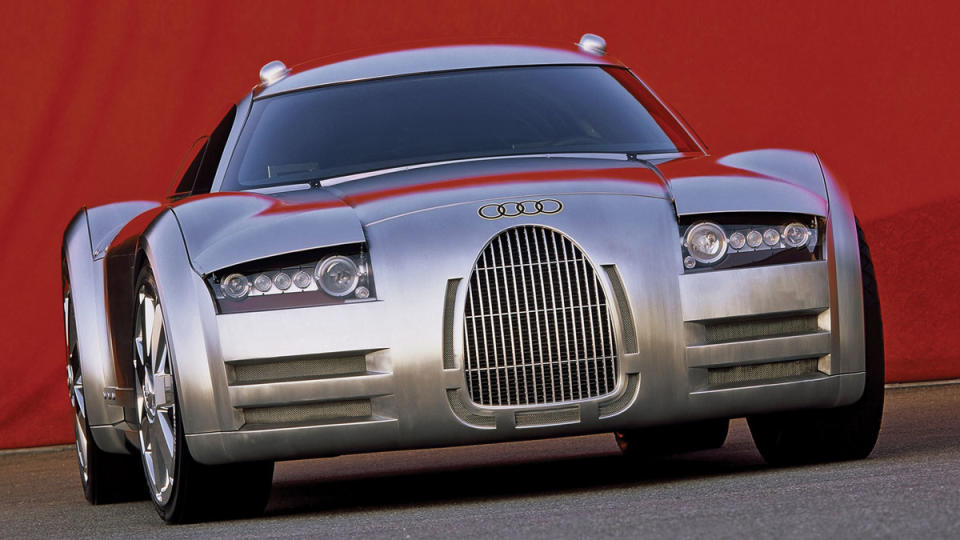
While Audi’s glistening aluminum Rosemeyer concept referenced the impressive TT and R8 models when it debuted on June 1, 2000, its mechanical underpinnings pay tribute to Bernd Rosemeyer, who won the European Drivers’ Championship for Auto Union in 1936. Rosemeyer also achieved a stunning 268 mph in a streamliner before meeting his tragic demise due to an ill-timed crosswind.
Beneath the concept’s expansive midsection is a hulking 8.0-liter W16, an homage to the 16-cylinder engine that Rosemeyer wrangled back in the day. While Audi’s one-off from the year 2000 seemed like just another pie-in-the-sky concept at the time, it proved a harbinger of even wilder things to come from the Volkswagen Group: the W16-powered Bugatti Veyron and its Chiron successor.
Dodge Tomahawk (2003)
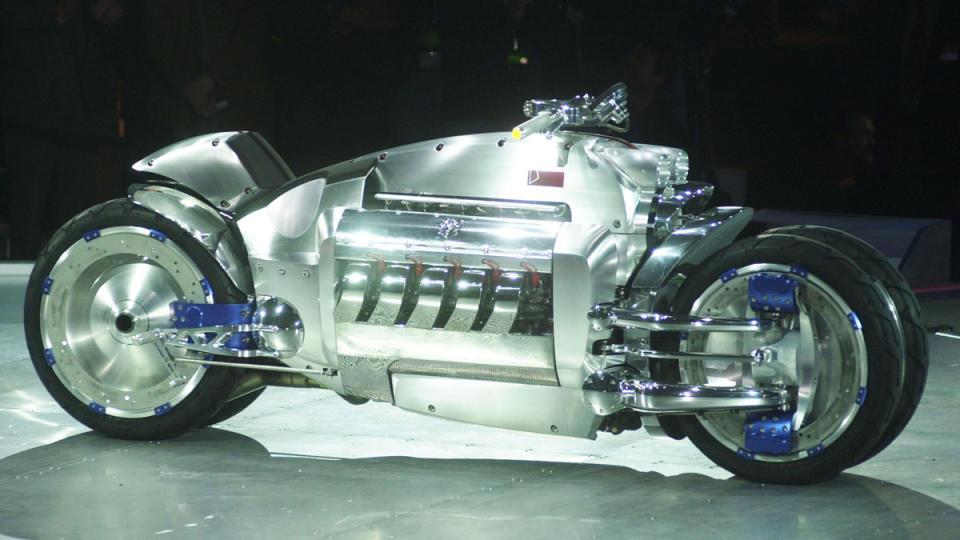

Can a motorcycle qualify as a concept car if it’s packing a Viper-sourced V-10 power plant? The Dodge Tomahawk debuted in 2003 as a left-field offering from the brand known for its singular style of four-wheeled bombast. Hailing from the team of DaimlerChrysler’s then-vice-president of advanced design, Freeman Thomas, the audacious bike incorporated a patented independent suspension system and a novel hub-center steering setup.
Most notably, a modded 8.3-liter V-10 was shoehorned into an improbable quadrangle framed by four thin tires. But the Tron-like bike was not the only dramatic reveal at the North American International Auto Show that year: it debuted alongside the stunning Cadillac Sixteen, Ford 427, and GM Hy-wire.
Cadillac Sixteen (2003)
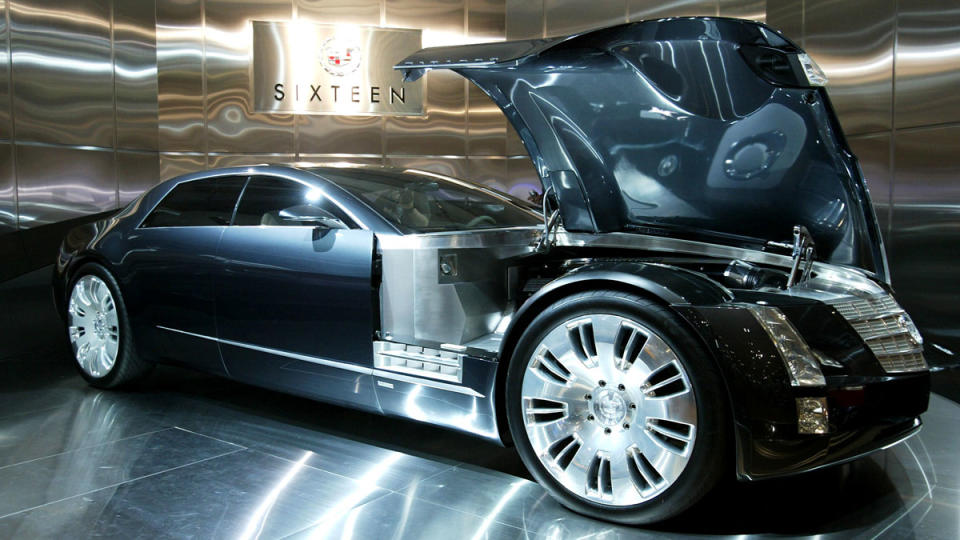

The Cadillac Sixteen broke cover at the 2003 North American International Auto Show boasting a dash-to-axle ratio that rivaled the outlandish 16-cylinder Caddies from the 1930s. This time around, the futuristic four-seater cloaked a hulking 13.6-liter V-16 within its lengthy snout, driving the rear wheels through a four-speed automatic transmission.
The concept wasn’t entirely unfeasible, as the 1,000 hp power train—with 1,000 ft lbs of torque—incorporated a cylinder deactivation system designed to provide MPGs in the mid-to-high teens. While the Sixteen never did make it to production, and General Motors eventually filed for bankruptcy in 2009, the car did herald the launch of Cadillac’s V-Series performance lineup that persists to this day.
Maserati Birdcage 75th (2005)
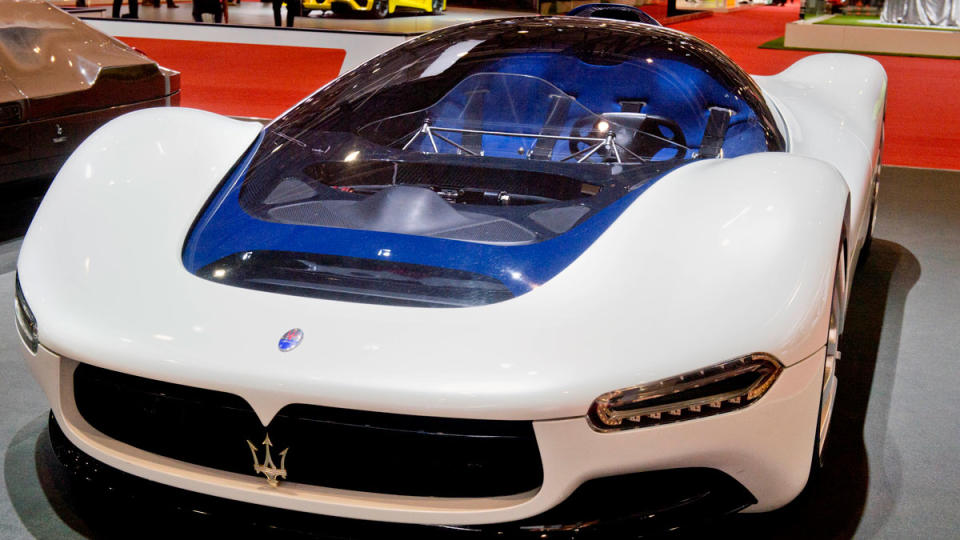

The Maserati Tipo 60/61, née Birdcage, was one of the most evocative race cars of the 1960s. So nicknamed for its intricate tube chassis, the model found notoriety despite never offering the reliability necessary for consistent victories. Fast forward to 2005, and Maserati, Pininfarina, and Motorola merged forces to build a 21st-century concept that channeled the inspired design of its 60s-era progenitor. Its development was timed for Pininfarina’s 75th anniversary.
The concept was created around the components of Maserati’s MC12 GT1 race car, which included a carbon-fiber chassis and mid-mounted V-12 engine. With a canopy that doubles as a door, the Birdcage 75th honors the great Maserati Birdcages of the past through humped wheel arches and windows that reveal peekaboo glimpses at its intricate underpinnings.
BMW M1 Hommage (2008)
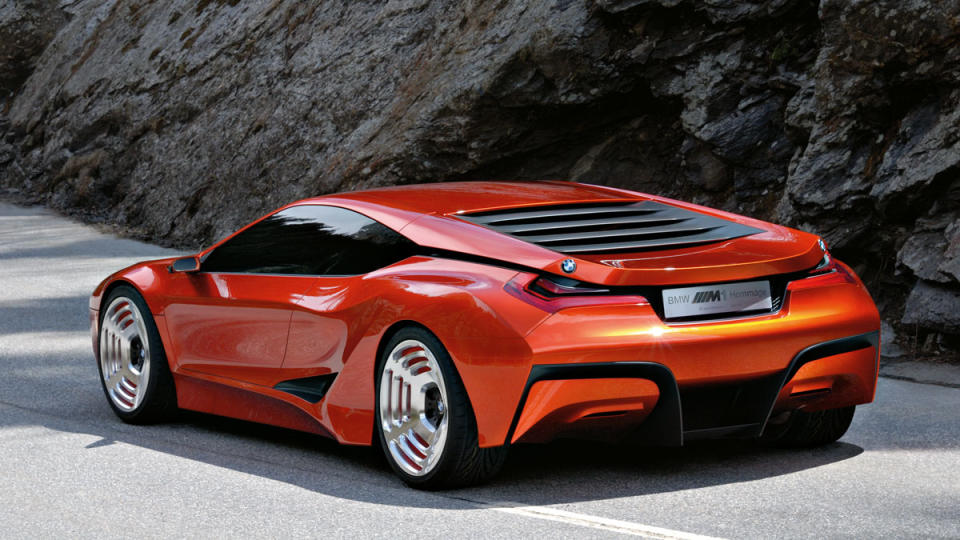

Concept cars rarely summon the past. So when they do, they’d better be visually intriguing enough to inspire the future lest they beg the question of why the automaker dipped into the catalogue in the first place. BMW’s M1 Hommage debuted at the 2008 Concorso d’Eleganza Villa d’Este on the 30th anniversary of the now-classic M1 supercar.
Despite being penned by the polarizing Chris Bangle, the M1 redux was universally praised, raising buzz about the possibility of the Bavarian brand creating a 21st century flagship that harkened the original, Giugiaro-designed model. Enthusiasts never did see a new M1, though a trio of M1s—the original Paul Bracq–penned 1972 Turbo concept, the production version, and the M1 Hommage—were reunited at Villa d’Este in 2022.
Jaguar C-X75 (2010)
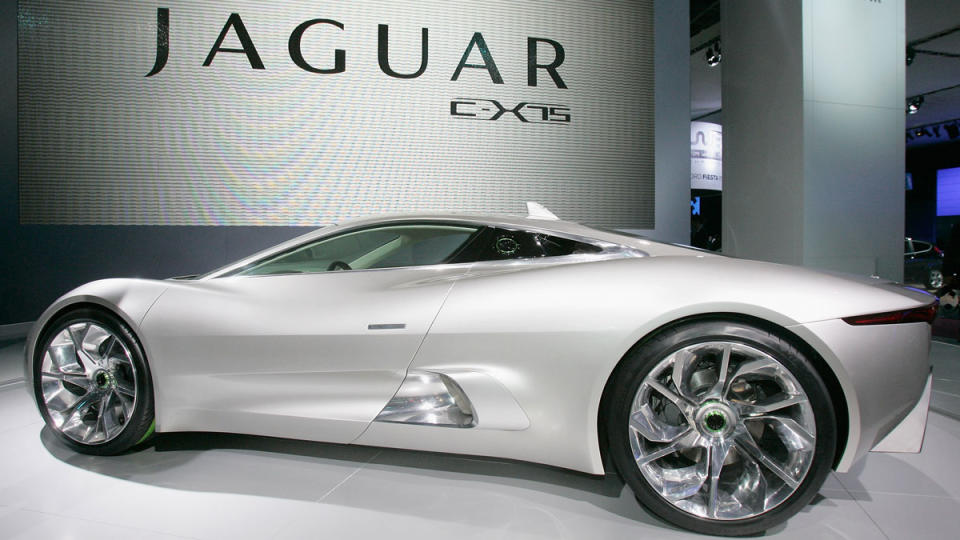

It’s not unheard of that a concept car becomes green-lit into a full-blown production model. So when the slinky Jaguar C-X75 wowed crowds at the 2010 Paris Motor Show, and was later heralded as a seven-figure rival to the Porsche 918 Spyder, supercar collectors plunked down deposits anticipating the addition of a quick kitty to their garages. The C-X75’s fate turned in 2012, though, when then-Jag boss Adrian Hallmark killed the gorgeous two-seater due to the dour state of the global economy.
The sleek XJ13-inspired concept got yet another lease on life when it appeared as the personal ride of the villain Mr. Hinx in the 2015 James Bond flick Spectre, later hitting the market as one of four stunt vehicles used in the film. The latest plot twist in this enduring vehicle’s life story comes courtesy of its designer, Ian Callum, who was commissioned by a collector to reengineer one of the stunt cars into a road-legal example.
Rolls-Royce 103EX (2016)
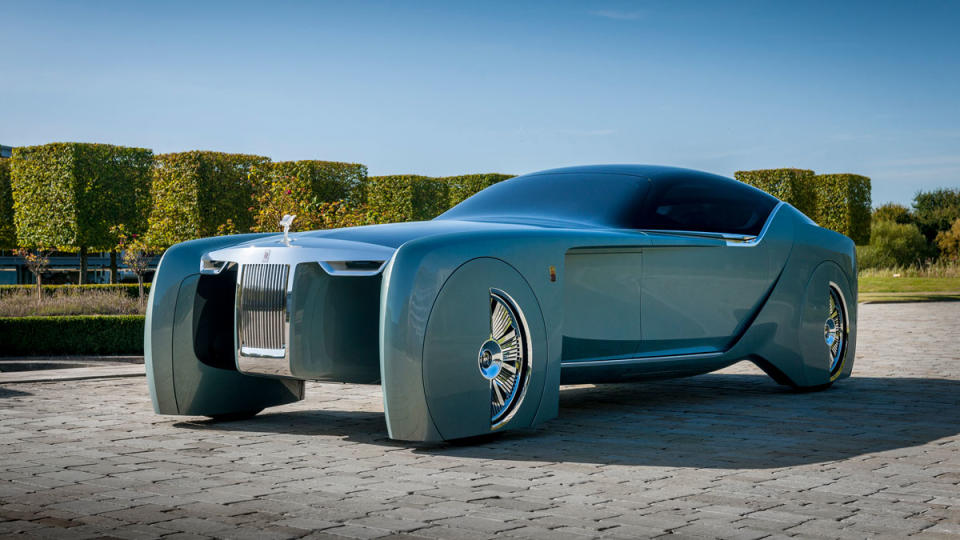

While the Rolls-Royce Spectre proved that electrification fits the Goodwood brand quite well indeed, the 103EX was not only envisioned as an all-electric vehicle but an autonomous cocoon as well. The concept debuted in 2016 as a vision for what ultra-luxury transport might look like in the year 2035.
With ubiquitous design curiosities, the 103EX went on a four-year world tour that eventually returned the ambitious one-off to Goodwood in 2019. While the future of autonomy will likely remain undefined for quite some time, the 103EX’s bold stab at the genre suggests that the British automaker will be ready when—or if— it’s ever time to retire the chauffer.
Mercedes-Maybach Vision 6 Cabriolet (2016)
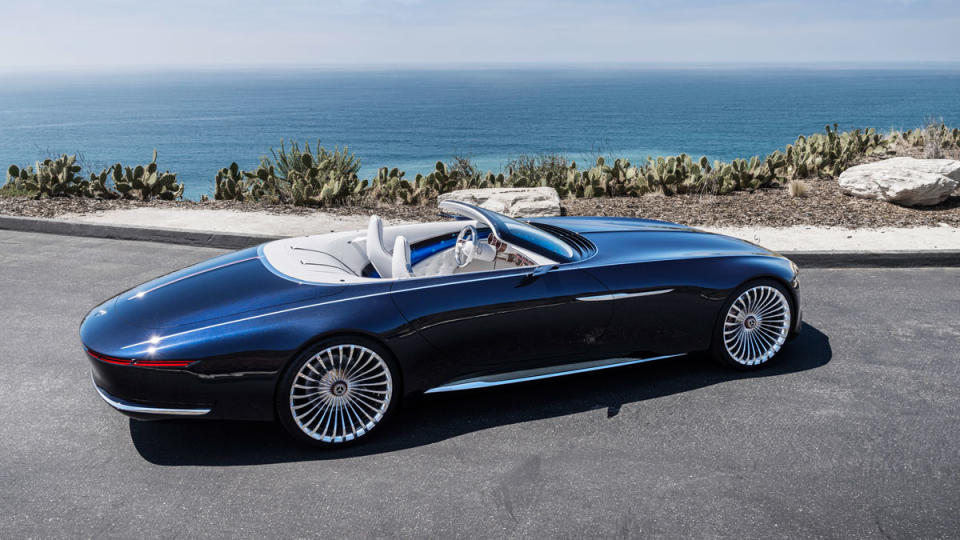

If proportion is style, the Mercedes-Maybach Vision 6 Cabriolet’s lavish dash-to-axle ratio and improbable 19-foot, 8-inch length make it one of the most expansively handsome roadsters in the history of open-air motoring. The concept’s late-summer debut at 2016’s Monterey Car Week portended an electric future for the shuttered Maybach nameplate (which has not been the case as of yet), and an appearance as Batman’s ride of choice in The Flash suggests the one-off’s appeal hasn’t waned.
With a total of 738 hp from electric motors at each wheel, the Vision 6 Cabriolet has a claimed cruising range of 200 miles, making it a roadster that prioritizes presence over practicality. Perhaps the concept will become resuscitated in another form as Mercedes dives deeper into electrification.
Renault Trezor (2016)
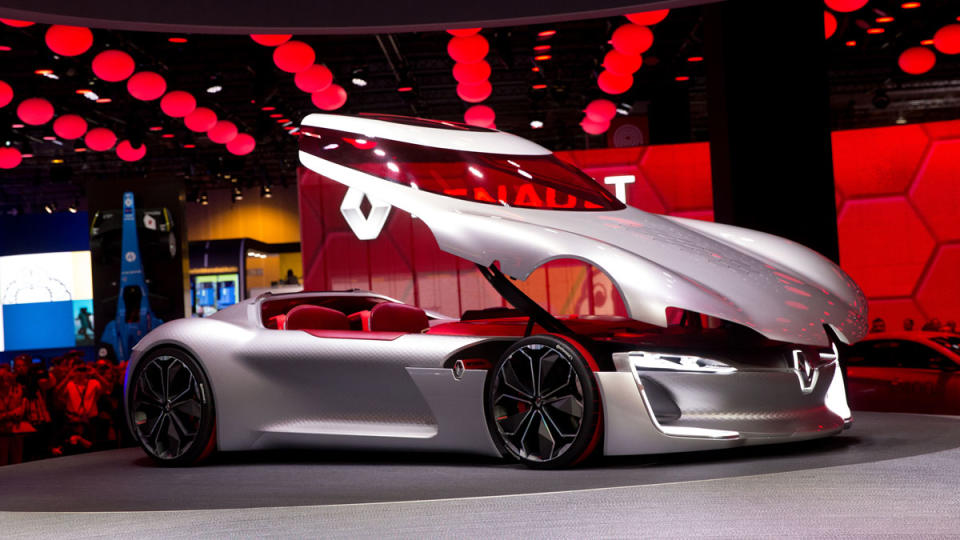

Renault’s Trezor debuted at the 2016 Paris Motor Show with an impossibly swoopy body that seemed to prevent it from ever becoming a real production car. Inspired by Renault’s 2010 DeZir concept, the Trezor features a massive clamshell roof and hood design that all but eliminate seams.
Despite the radical styling, the low-slung two-seater hides a down-to-earth electric motor producing 349 hp. The one-off won the Festival Automobile International award for Most Beautiful Concept of 2016, and it was rumored to be slated for release as a 2020 production car. Unfortunately, it has yet to make it beyond the land of fantasy.
Porsche 919 Street (2017)
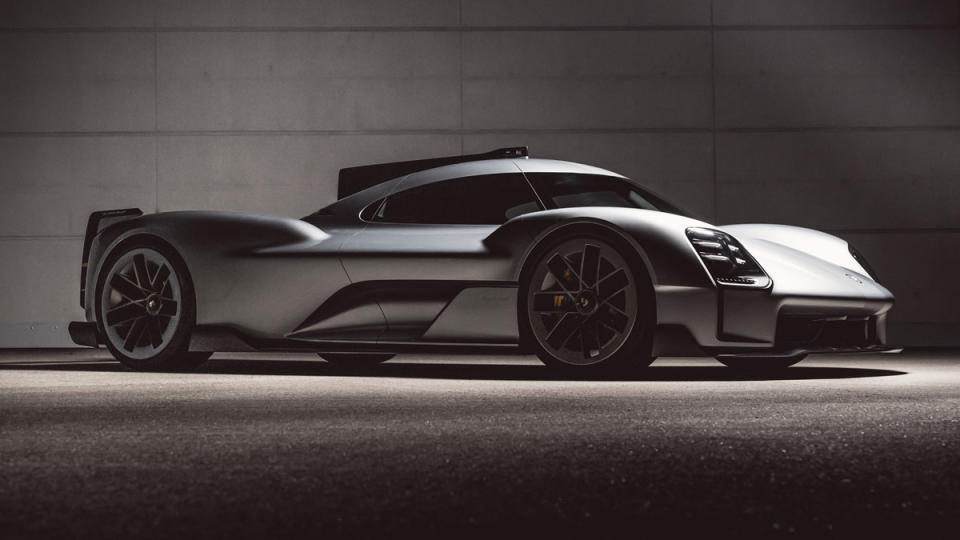

Translating radical race technology to the street is nothing new for Porsche. The brand has been doing so in flagships from the Carrera GT to the 918 Spyder, consistently finding ways to make road cars go faster than anything with a license plate deserves to. So it was no coincidence that on the 20th anniversary of the Carrera GT, the 919 Street was revealed.
As the name suggests, the concept is a road-going version of the 919 race car. Yet unlike the vast majority of concept cars which debut to much fanfare at auto shows, the 919 Street was developed internally three years prior as a design study that never progressed beyond the point of a clay model.
Audi Skysphere (2021)
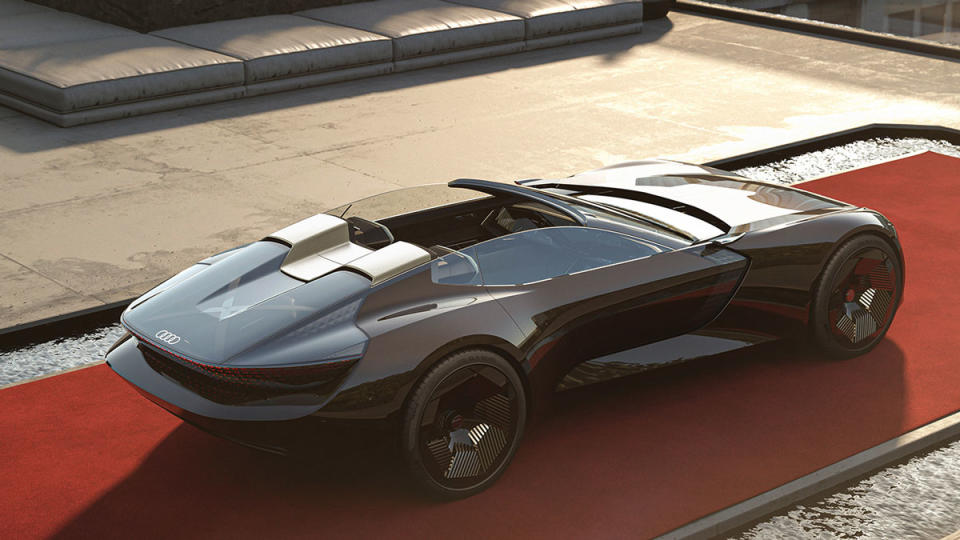

The Audi Skysphere was inspired by two cars that are decades old: the Horch 850 roadster and the shorter-wheelbase Horch 853. Rather than commit to one of the two classics, Audi designers took a best-of-both-worlds approach and enabled the Skysphere to stretch into a longer-wheelbase autonomous grand tourer or shrink into a more driver-focused configuration. And with a steering wheel that folds into the dashboard, the Skysphere also alludes to a couple of distinct driving modes: a luxuriantly passive motoring experience or a more conventional hands-on approach.
Cadillac Innerspace (2022)
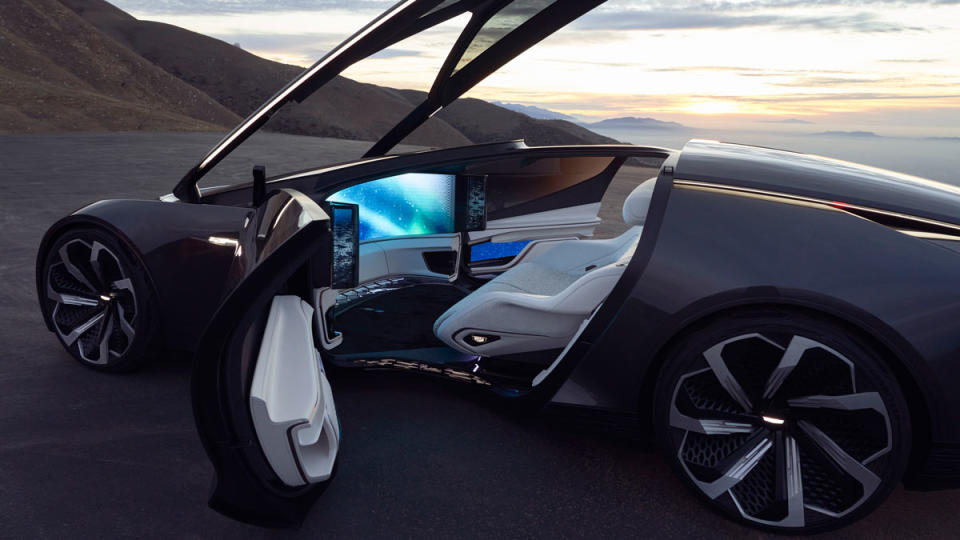

The story of the Cadillac Innerspace starts, fittingly, on the inside. Debuting at the 2022 Consumer Electronics Show, the teardrop-shaped Cadillac was centered on offering a lounge-like interior that replaced things like steering wheels and pedals with ottomans and wraparound LED displays presenting augmented reality.
Powered by the brand’s Ultium EV technology, the fully electric concept’s emphasis on space and serenity portrays a dramatically different vision of the future compared to the usual ultra-high-powered, ultra-high-performance alternatives.
Hyundai N Vision 74 (2022)
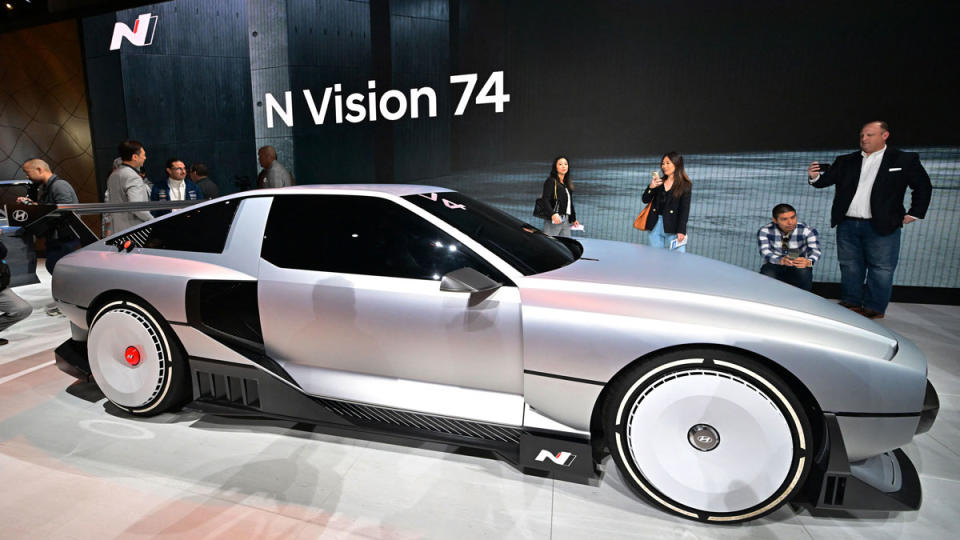

Sometimes concepts hold special appeal because they seem just attainable enough to become real. Case in point: Hyundai’s N Vision 74, whose squat, rally ready body sent the internet aflame when it was revealed in 2022. Interestingly, the concept drew inspiration from another one-off that helped put Hyundai on the map way back in the day: the Giorgetto Giugiaro–designed Pony Coupe, which debuted at the 1974 Turin Motor Show. The modern-day concept packs a hydrogen-electric drivetrain that produces nearly 700 hp. The N vision 74’s topicality and widespread popularity suggest that the carmaker may someday bring this spunky concept to life.
Genesis X Convertible (2023)
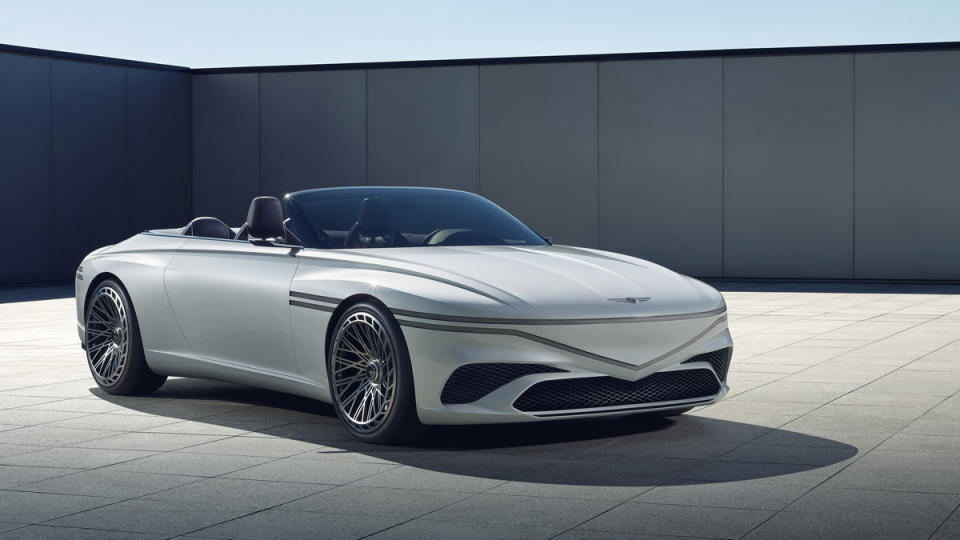

Conceived as a dark-horse challenger to luxurious four-seat convertibles like the BMW 8 Series, the Mercedes-Benz SL-Class, and the Bentley Continental GT, the Genesis X Convertible—packing EV power beneath its lovely long body—was unveiled in 2023. Embedded lighting cues accentuate its greyhound-like proportions, which enable generous legroom for two rear passengers. Though the Genesis X began as an internal design exercise and graduated to a public-facing concept, don’t be surprised if the Korean marque fast-tracks this stunner to a production flagship.
Porsche Mission X (2023)


Porsche flagships typically incorporate bleeding-edge power trains with the sole purpose of breaking lap records, and though the Mission X’s radically cool bodywork may have been what initially captured everyone’s attention when it debuted in 2023, the all-electric concept represents next level athleticism.
This is owed in part to a power-to-weight ratio of 1 hp per kilogram and a 900-volt system that all help make the car capable of headline-worthy lap times at the Nürburgring Nordschleife racetrack. The Mission X debuted exactly 75 years after Porsche’s first model, the 356, hit the road, and perhaps it will become a record-busting reality that makes it into the hands of Porsche owners.
Source Agencies

